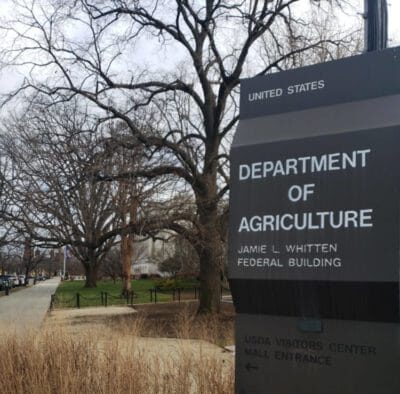NEW ORLEANS, February 13, 2023 – As part of the Biden-Harris Administration’s commitment to making Western communities more resilient to the impacts of drought and climate change, the U.S. Department of Agriculture (USDA) announced new investments and strategies to help farmers and ranchers conserve water, address climate change and build drought resilience in the West, supported in part by funding from the Inflation Reduction Act (IRA).
The Western Water and Working Lands Framework for Conservation Action is a comprehensive, multi-state strategy under USDA’s Natural Resources Conservation Service (NRCS) to address key water and land management challenges across 17 Western States. This is the latest NRCS-issued Framework for Conservation Action, all of which provide direction, support and coordination to address resource concerns and threats across state boundaries and leverage new scientific tools to guide strategic program implementation on the ground. The Framework includes guidelines for identifying vulnerable agricultural landscapes and 13 strategies to help NRCS state leaders, water resource managers, and producers respond to priority challenges.
Guided by this new framework, the WaterSMART Initiative will invest $25 million in three new priority areas and 37 existing priority areas, assisting communities and producers in the West.
“Climate change is taking an enormous toll on farmers and ranchers in the West. Record breaking drought and exhausted water supplies are hurting agricultural operations and entire communities,” said NRCS Chief Terry Cosby. “WaterSMART investments are being directed where they can have the most impact, and the new Western Water and Working Lands Framework for Conservation Action lays the foundation for helping producers and communities address pressing climate challenges and build resiliency for the future. Complemented by investments from the Inflation Reduction Act, USDA is utilizing this framework and all available tools to deliver assistance that the severity of the water supply challenges in the West demand.”
NRCS leveraged stakeholder feedback from a public listening session, input from the field and the latest scientific data to shape and inform the framework.
NRCS Western Water and Working Lands Framework for Conservation Action
Agricultural producers steward more than two thirds of the nation’s land resources. Water flows through these lands into reservoirs that supply communities with water. In many areas of the dry West, producers are struggling to irrigate their crops due to inadequate precipitation. Water supply in these areas is impacted by drought, increasing demand, and climate change.
NRCS has identified six major water and working land management challenges resulting from threats to water supply in the West:
- Forecasting water supply.
- Sustaining agricultural productivity.
- Protecting groundwater availability.
- Protecting surface water availability.
- Managing and restoring rangelands and forestlands.
- Responding to disruptions from catastrophic events.
For each of these major management challenges, opportunities exist to help individuals, entities and communities better manage water and working lands, conserve natural resources and build resilience to drought and climate change. Strategies include:
- Improve reliability of water supply forecasts.
- Improve soil moisture and irrigation water management.
- Improve water and nutrient management in crop fields and pastures.
- Modernize water infrastructure.
- Improve community water supply by completing watershed projects.
- Increase reuse of wastewater for agriculture and conservation.
- Prolong aquifer life.
- Complete managed aquifer recharge projects.
- Reduce surface water withdrawals.
- Install conservation systems that protect water quality.
- Restore and protect streams and wetlands.
- Manage and restore rangelands and forestlands.
- Increase resilience during disaster recovery.
NRCS will use this framework to set comparable goals for effective program delivery and coordinate and track progress on helping individuals, entities and communities across the West address their management, conservation and resiliency needs.
From 2020 to 2022, more than $410 million of annual conservation assistance NRCS provided to producers helped address drought in the West. Now, with the new Western Water and Working Lands Framework for Conservation Action in place, NRCS can further leverage the tools and coordination to build upon these investments and expand support by advancing innovative targeting at the state, local and regional levels, while also utilizing additional funds from the Inflation Reduction Act that advance both climate mitigation and Western water priorities.
####
USDA – 2023


